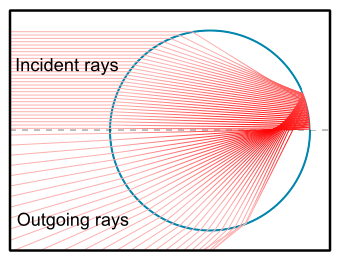 California Watch (blog) | Are dust, smoke and diesel exhaust really killing 9200 people a year? Less than the width of a human hair, fine particulate matter from smoke, dust, coal and diesel exhaust are so small they slip through the lungs and into the ... " |
2010-09-24
Are dust, smoke and diesel exhaust really killing 9200 people a year? - California Watch (blog)
2010-09-16
Dust and ash blowing to the sea on 15 September 2010
Strong northerly winds, and rather dry conditions, meant that a lot of dust (and ash) was blowing out over the ocean on 15 September 2010.
The images above are from 13:20 (left column) and 15:00 (right column). Notice the little cloud that settles over Mýrdalsjökull (in the center on the south coast).
It is also interesting to note that the surface of the ablation zone seems to be completely free of ash. Since all snow accumulation melts away, we are left with a bare ice surface of which the ash washes away during rain and with melt water.
2010-09-11
Nice double rainbow
Just for fun, but somehow it is always fun to see a rainbow.
A rainbow forms when light from the sun refracts at the surface of the raindrop, reflects from the back of it, and is refracted at the surface on the way out again, see image below.

(Image from Wikipedia.org)
Most of the light comes out at 40° - 42° angle. This depends on the raindrop material (not size), rainbows formed in sea spray are smaller.
How much the light is refracted depends on wavelength (color), as the image below shows.
 (Image from Wikipedia.org)
(Image from Wikipedia.org)
A double rainbow forms when the light is reflected twice, as shown on the image below.
 (Image from Wikipedia.org)
(Image from Wikipedia.org)
The light is most intense at 50°- 53° angle, and the colors are inverted, in a reverse order compared to the main rainbow. The outer rainbow is also much fainter.
2010-09-08
Re-suspended ash over the Reykjavik area on 7 September 2010
Levels of PM10 reached over 500 micro-g/m3 in Reykjavik (GRE station) today.
This affected the view considerably.
The view in Mosfellsbæ on 7. september 2010, around 18:00. Still a lot of particulate matter (PM) in the air, giving the appearance of a dense fog.
Measurements show the reason for the bad visibility.
High levels of PM10 and PM2.5 were measured in the Reykjavik area, as the plot above shows.
Quite windy at Tindfjöll, near Eyjafjallajökull, and blowing to the east (towards Reykjavík area).
Even worse air quality in Akureyri (due to dust storm, and possibly some ash).
The levels in Akureyri reached over 1200 micro-g/m3 for a short time yesterday.
2010-09-07
Re-suspended ash blowing over Reykjavik and a small dust storm in the north
Sunny day, with some wind, means re-suspended ash and dust storms.
North of Dyngjujökull (north-west part of Vatnajökull) we can probably see a small dust storm.
And in the south re-suspended ash is blowing to the west-north-west from the Eyjafjallajökull eruption zone, although clouds make observations difficult.
Image from MIRAVI – Meris ESA, taken at 12:12 on 7 September 2010.
Zooming in on the southern part of the country:
Similar image from MODIS NASA Rapidfire, taken at 12:15 on 7 September 2010.
The PM10 concentration in Reykjavik rose around noon, reached about 206 micro-g/m3 around 16 (at FHG in Reykjavik), but seems to be on the way down again (although that might change).
The difficult task of estimating the melt rate of the large ice sheets
It is a difficult task to estimate the mass loss of the large ice sheets, Greenland and West Antarctica.
Recent modeling, where isostacy due to load changes is incorporated (in a better way than before) change these estimate greatly.
For the period of GRACE measurements (2002 – 2008), the mass loss per year changes from earlier estimate to the new estimate as shown below:
| Earlier estimate Mass loss (Gt/a) | New estimate Mass loss (Gt/a) | |
| Greenland | 230 | 104±23 |
| West Antarctica | 132 | 64±32 |
The difference here is almost 100 Gt/a (giga-tonnes per year) for Greenland, and 40 Gt/a for West Antarctica.
This means that the large ice sheets contributed less to the rise in sea level than previously thought. The difference is ascribed to thermal expansion (at least for now).
Details can be seen in the article by Wu et al. (2010) in Nature Geoscience (needs subscription, so I have only seen the abstract and the news about the results): http://www.nature.com/ngeo/journal/v3/n9/full/ngeo938.html
Then we just need to wait and see whether new models change these numbers even further, and in which direction :-)
2010-09-03
High levels of PM10 in Reykjavik due to re-suspended ash and sand
High levels of PM10 are now measured in Reykjavik.
Strong winds from SE carry re-suspended ash, and probably sandur, towards Reykjavik.
At the background station FHG in Reykjavik, level up to 350 micro-g/m3 (30-min average) were measured just before noon.








